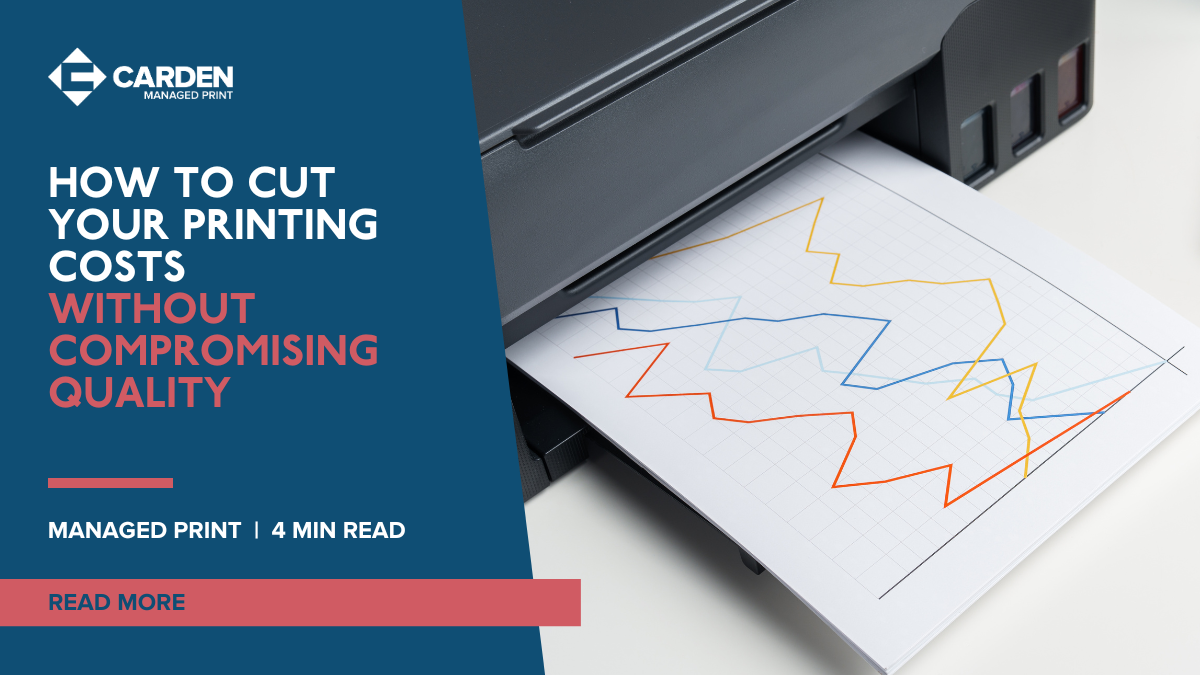Printing costs are one of those hidden expenses that quietly drain your budget. Most business owners don’t realise how much they’re spending on outdated or inefficient print processes—until it’s too late. But cutting costs doesn’t have to mean compromising on quality.
In this article, we’ll show you how to balance savings with professional results through smart printing strategies and the power of Managed Print Services (MPS). Whether you’re running a small office or managing a multi-site operation, these tips can help you reduce costs while keeping your printed output sharp and reliable.
1. Audit Your Current Print Environment
The first step in cutting costs is knowing where your money is going. An in-depth audit helps uncover hidden inefficiencies, such as underused printers, excessive colour printing, or costly toner refills.
What to look for:
- How many printers are in use and who uses them
- Monthly print volumes and supply usage
- Downtime, maintenance needs, and energy consumption
Ask yourself: Are you still using individual desktop printers? Do you know your cost per page?
As part of your managed print onboarding, we can provide a detailed print audit, offering insights into your current usage and highlighting areas for immediate cost-saving improvements.
2. Switch to a Managed Print Service (MPS) Model
Managed Print Services take the hassle out of print management by outsourcing it to experts. MPS providers monitor your usage, automate supply orders, maintain your equipment, and ensure everything runs smoothly—for a predictable monthly cost.
Benefits of MPS:
- Cost savings from device consolidation and proactive maintenance
- Improved reliability and uptime
- Centralised control over all printing resources
Myth to bust: Outsourcing print management doesn’t mean losing control—it means gaining visibility and better results.
By partnering with a Managed Print Service provider like Carden Managed Print, you gain access to expert support, proactive maintenance, and continuous monitoring that ensures optimal performance and cost efficiency.
3. Standardise Devices and Supplies
A wide variety of printers and cartridges across departments adds unnecessary complexity and cost. Standardising your printer fleet by leasing photocopiers and printers from the same manufacturer allows for simplified support, training, and supply ordering.
Key strategies:
- Reduce the number of printer models in use
- Choose multi-function devices that meet various needs
- Purchase supplies in bulk for savings
Ask: Are different departments using different models for similar tasks?
Our team of managed print experts helps standardise your print environment by recommending the right mix of devices, simplifying supply chains, and reducing overall operational costs.
4. Implement Print Policies and User Access Controls
Controlling user behaviour is essential to eliminate unnecessary printing. Print policies and access controls can drastically reduce waste without affecting productivity.
Ideas to implement:
- Default to double-sided (duplex) printing
- Restrict colour printing to specific teams
- Require PIN codes or ID badges to release print jobs
Ask: How many pages are left abandoned in your office printer each day?
Our Managed Print Service enables you to implement and manage print policies easily, giving you granular control over who prints what, where, and how often.
5. Move Toward a Digital-First Document Strategy
Not all documents need to be printed. Adopting digital workflows can significantly reduce the need for hard copies, especially for internal processes.
Digital-first ideas:
- Use cloud storage and collaboration tools
- Introduce digital signatures and paperless approvals
- Scan-to-email rather than photocopying
Clarification: Going digital doesn’t mean going paperless—it means using paper only when it adds value.
Our Managed Print Services include tools and integrations like Cloud Printing that support digital workflows, helping your business reduce paper usage while improving document accessibility and collaboration.
6. Use Analytics to Continuously Improve
Once your new systems and policies are in place, use data to refine and optimise further. Most MPS solutions come with detailed reporting tools that can track print volumes by user, department, or device.
Use analytics to:
- Identify trends and spot inefficiencies
- Benchmark progress and set goals (e.g., reduce colour usage by 20%)
- Adjust policies based on real-time data
Ask: Are your printing decisions based on data or assumptions?
Carden Managed Print can provide ongoing analytics and reporting to ensure your printing environment stays optimised and aligned with your business goals.
Conclusion
Reducing printing costs doesn’t mean sacrificing quality—it’s about making smarter decisions. From auditing your current environment to using analytics for ongoing improvements, there are plenty of ways to save money and enhance performance.
If you’re unsure where to begin, start with a professional print assessment. At Carden Managed Print, we help businesses take control of their print infrastructure, reduce waste, and save money—all while delivering professional-quality results.
Take action today. Contact us to schedule your free print audit and discover how much your business could save.

